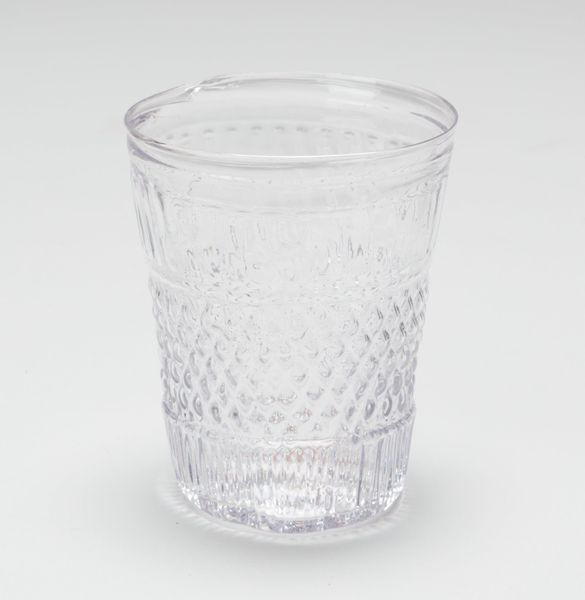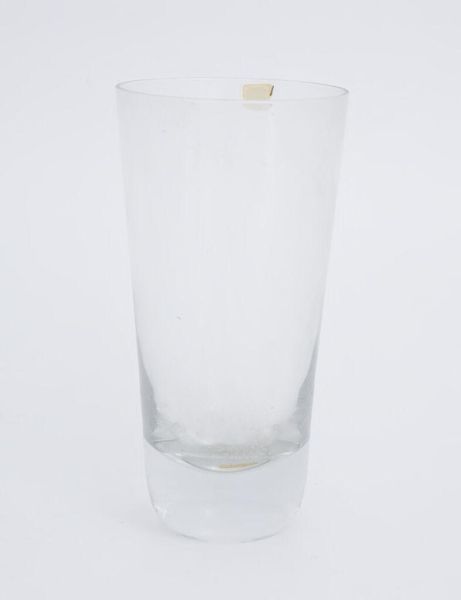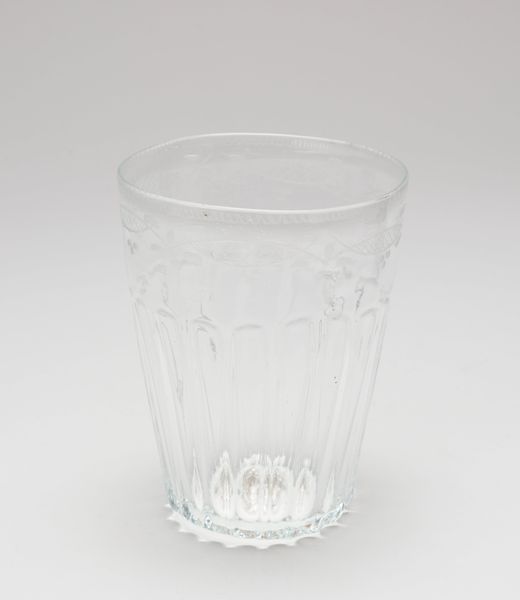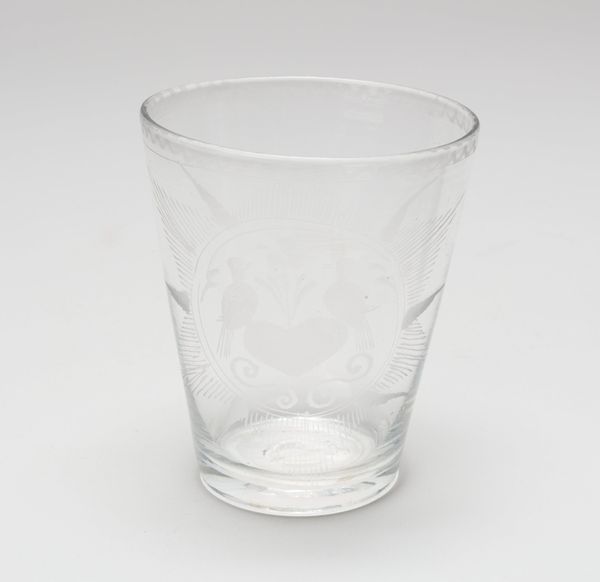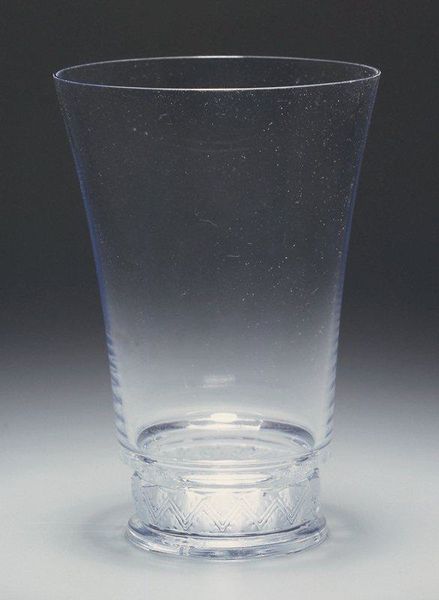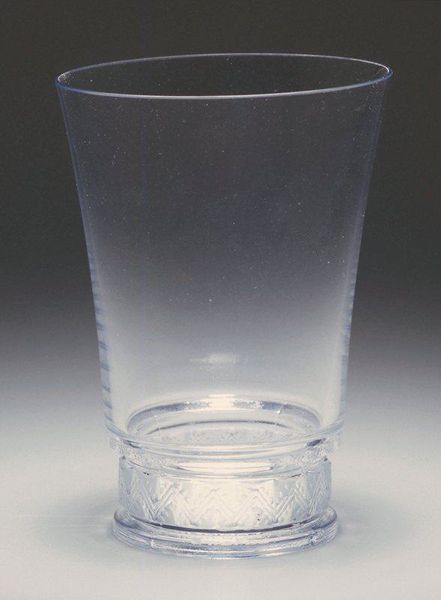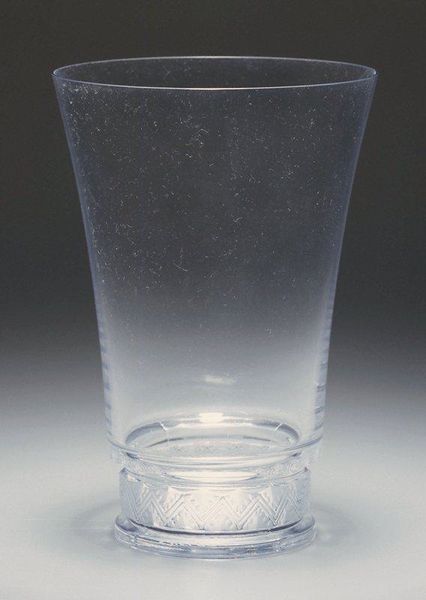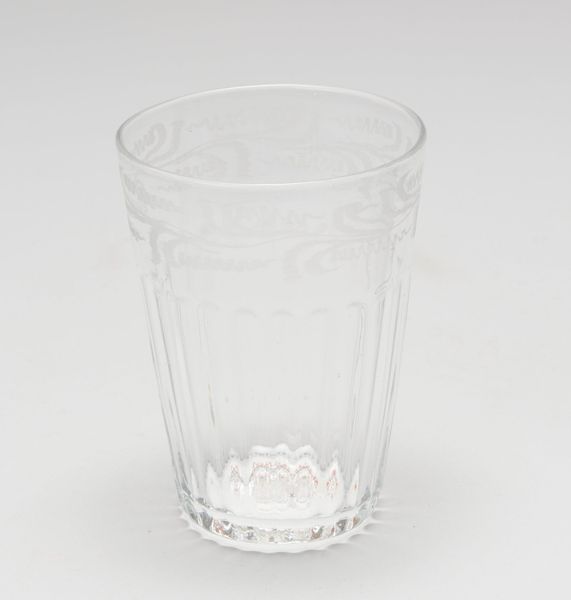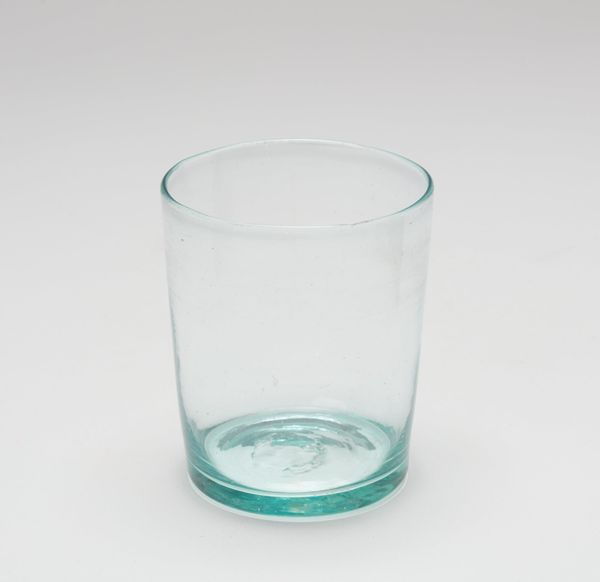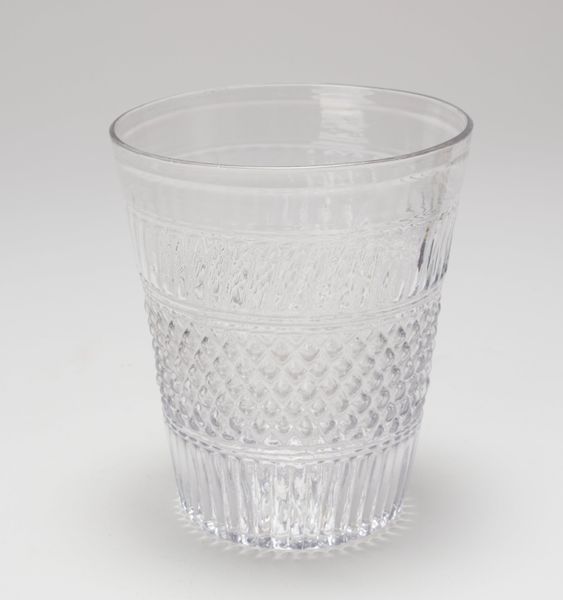
glass
#
glass
Dimensions: 6 1/4 x 4 1/2 x 4 1/2in. (15.9 x 11.4 x 11.4cm)
Copyright: Public Domain
Curator: Before us, we have a deceptively simple object—an anonymous "Water Glass," crafted from glass, sometime between the 18th and 19th centuries, now residing at the Minneapolis Institute of Art. Editor: Immediately, I'm struck by its unassuming presence. The clarity of the glass, the vertical ribbing—it's so restrained, almost austere. Curator: Precisely. Note how the transparency of the material allows light to penetrate and be refracted, creating subtle variations in tone and texture. The cylindrical form is disrupted only by these delicate ribs. Editor: It’s more than just a drinking vessel, isn’t it? An object like this reflects a certain societal value. Who was drinking from it? And under what circumstances? It speaks volumes about domestic life. Curator: Indeed, but consider, also, how the repetition of the ribs generates a visual rhythm. The light catches on the ridges, disrupting the smooth surface and engaging the viewer. Editor: Absolutely. And I see the imperfections as integral to its character. An everyday object speaks to a time and place, to lives lived, habits formed. There is some residue remaining in the glass. What liquid may it have held, I wonder? Curator: Furthermore, let us contemplate the craftsmanship. The act of shaping glass, achieving this level of clarity and uniform ribbing suggests a skilled artisan. A simple but functional form has now been elevated. Editor: These kinds of simple objects provide such insight. What we learn from them are glimpses of a bigger historical context. An anonymous maker for an anonymous user. It begs for additional investigation. Curator: Agreed. There’s a powerful quietude within the glass, offering us some insights. Editor: It serves as an entry point to question design and intention in a world saturated with items meant for mass consumption. Fascinating!
Comments
No comments
Be the first to comment and join the conversation on the ultimate creative platform.


